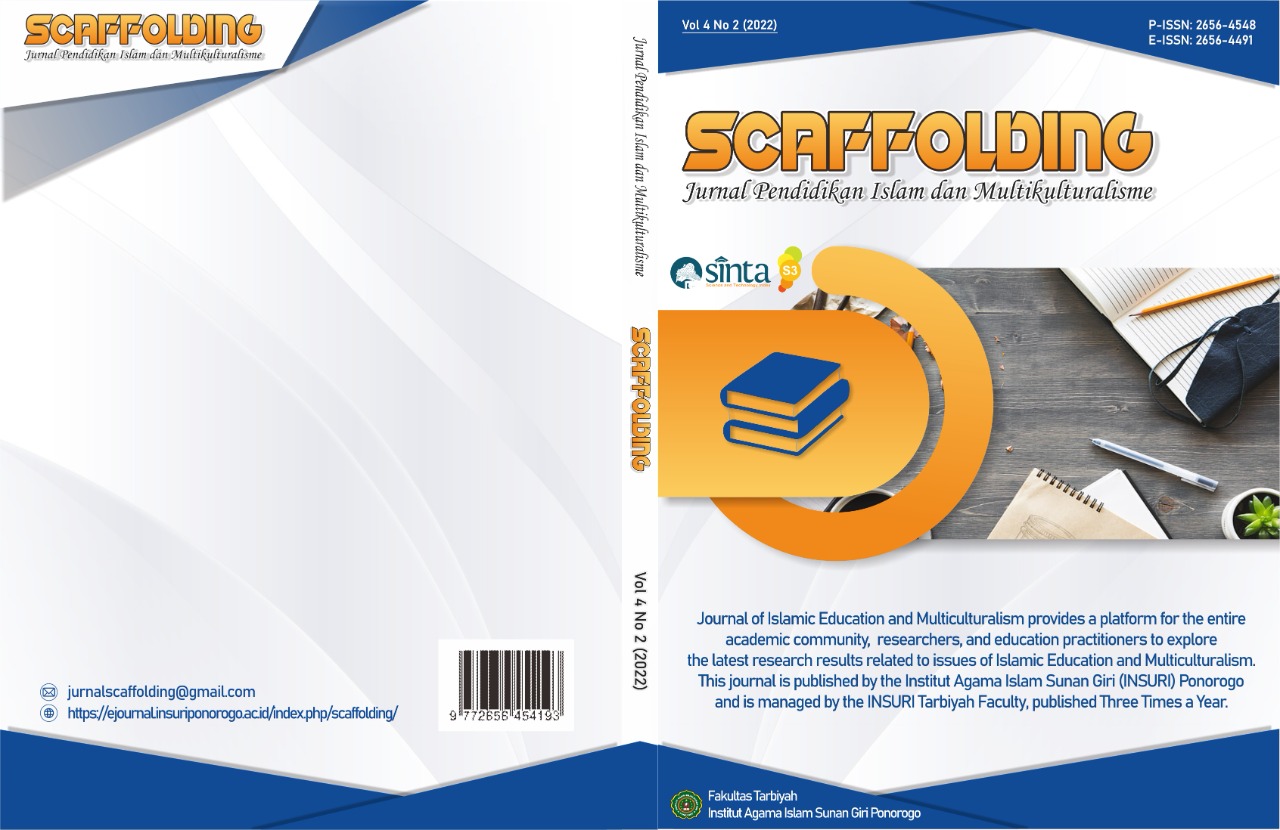Pengembangan E-Modul Fikih dalam Pembelajaran Fikih untuk Madrasah Tsanawiyah di Medan
DOI:
https://doi.org/10.37680/scaffolding.v4i2.5235Keywords:
Development, E-Module, Fiqh learningAbstract
This research aims to develop a Fiqh E-Module that is in accordance with the curriculum and learning needs in class VII MTs Irsyadul Islamiyah. This research uses research and development methods. The development model used is the ADDIE (analysis-design-development-implementation-evaluation) development model. Several relevant data collection techniques to support this research are observation, questionnaires, interviews, tests and documentation. The data collected in this research includes qualitative data and quantitative data. Qualitative data comes from criticism, suggestions, input and comments from experts (validators) and Fiqh teachers, while quantitative data is in the form of assessment sheets given to validators to assess the Fiqh e-module being developed, questionnaires to find out students' responses to the e-module. The jurisprudence used and the test results are pre-test and post-test scores from learning Jurisprudence using the Jurisprudence e-module and before using the Jurisprudence e-module. The population in this study were class VII MTs students. The researcher took research samples from class VII A students at MTs Irsyadul Islamiyah Tanjung Medan Labuhanbatu Selatan, totaling 40 people. The sampling technique is nonprobability sampling technique, the technique used is purposive sampling. Qualitative data will be analyzed using descriptive analysis. Quantitative data was analyzed by calculating the percentage of answers to each question item given to respondents. The results of data analysis use data interpretation criteria. The results of this research were validated by two experts, the first being a material expert who obtained 98% results, and a media expert and technology expert who obtained 78% results in the very valid category. After that, it was tested on students by getting a pre-test score of 47.8, then getting a post-test score of 84.8 in the very feasible category, and the practicality level obtained a score of 89.8% in the very practical category.
Downloads
Published
How to Cite
Issue
Section
License
Authors who publish with this journal agree to the following terms:
Authors retain copyright and grant the journal right of first publication with the work simultaneously licensed under a Creative Commons Attribution-NonCommercial 4.0 International License that allows others to share the work with an acknowledgement of the work's authorship and initial publication in this journal.
Authors are able to enter into separate, additional contractual arrangements for the non-exclusive distribution of the journal's published version of the work (e.g., post it to an institutional repository or publish it in a book), with an acknowledgement of its initial publication in this journal.
Authors are permitted and encouraged to post their work online (e.g., in institutional repositories or on their website) prior to and during the submission process, as it can lead to productive exchanges, as well as earlier and greater citation of published work.



